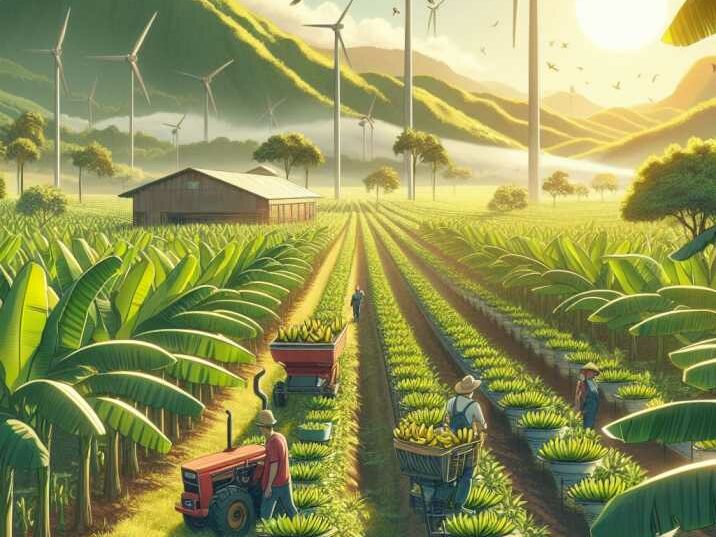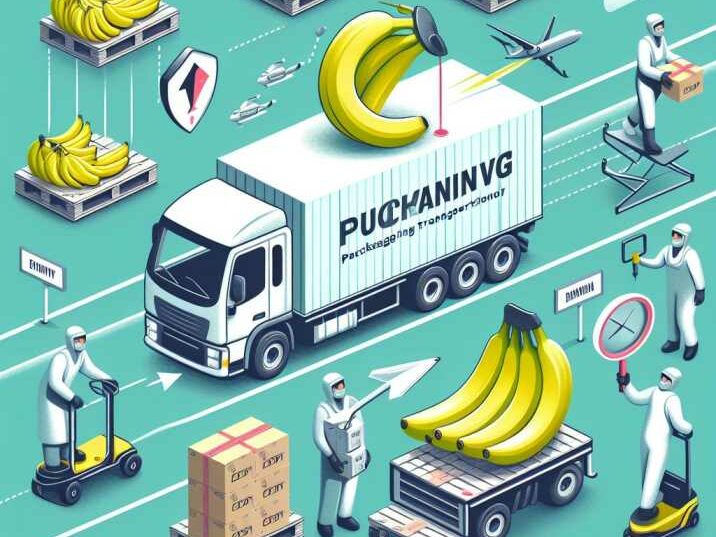Introduction:
Table of Contents
Bananas are one of the most beloved fruits globally, and the Cavendish variety accounts for the majority of bananas consumed worldwide. However, with the increasing demand for this tropical fruit comes a significant challenge: waste management in Cavendish banana production. The process of growing, harvesting, and transporting bananas generates substantial waste, which can have detrimental effects on the environment if not managed properly. In this article, we will explore strategies to reduce waste in Cavendish banana production, ensuring sustainability and responsible agricultural practices.

Why Reduce Waste in Cavendish Banana Production?
Before delving into the strategies, it’s essential to understand why reducing waste in Cavendish banana production is crucial. Excessive waste not only harms the environment but also leads to economic losses for farmers and affects the overall sustainability of banana cultivation.
The Impact of Waste on the Environment:
Excessive waste from Cavendish banana production can contaminate soil and water sources, leading to environmental degradation. Moreover, improper waste disposal contributes to greenhouse gas emissions and exacerbates climate change, posing long-term threats to ecosystems.
Economic Implications:
Waste in banana production results in financial losses for farmers due to inefficiencies in resource utilization and increased disposal costs. By implementing waste reduction strategies, farmers can improve their profitability and contribute to the long-term viability of the industry.
Strategies to Reduce Waste in Cavendish Banana Production:
Now, let’s explore some effective strategies that can help mitigate waste in Cavendish banana production:
1. Optimize Harvesting Practices:
Harvesting bananas at the right stage of ripeness is essential to minimize waste. Overripe bananas are more prone to damage during transportation and storage, leading to increased wastage. By training workers to identify optimal ripeness and implementing efficient harvesting techniques, farmers can reduce post-harvest losses significantly.
2. Improve Packaging and Transportation:
Proper packaging and transportation are critical to prevent bruising and damage to bananas. Using sturdy crates or boxes and implementing careful handling practices can minimize physical injuries to the fruit during transit. Additionally, optimizing transportation routes to reduce travel time and adopting eco-friendly packaging materials can further reduce waste and environmental impact.
3. Implement Sustainable Farming Practices:
Adopting sustainable farming practices such as organic farming, integrated pest management, and soil conservation techniques can help minimize waste and promote environmental stewardship. By reducing reliance on chemical inputs and preserving natural resources, farmers can mitigate the negative impact of banana production on the environment.
4. Utilize By-Products:
Banana by-products such as peels and leaves can be utilized for various purposes, including composting, animal feed, and biofuel production. By repurposing these by-products instead of disposing of them as waste, farmers can minimize environmental pollution and create additional revenue streams.
5. Educate and Empower Farmers:
Education and training programs play a crucial role in promoting waste reduction practices among banana farmers. By providing access to information, resources, and technical assistance, agricultural organizations and government agencies can empower farmers to adopt sustainable practices and improve overall efficiency.

Table of Information:
| Strategy | Description |
|---|---|
| Optimize Harvesting Practices | Train workers to identify optimal ripeness and implement efficient harvesting techniques |
| Improve Packaging and Transportation | Use sturdy crates/boxes and eco-friendly packaging materials for transportation |
| Implement Sustainable Farming Practices | Adopt organic farming, integrated pest management, and soil conservation techniques |
| Utilize By-Products | Repurpose banana by-products for composting, animal feed, and biofuel production |
| Educate and Empower Farmers | Provide education, resources, and technical assistance to promote sustainable practices |
Conclusion:
Reducing waste in Cavendish banana production is essential for ensuring the long-term sustainability of the industry and mitigating environmental impact. By implementing strategies such as optimizing harvesting practices, improving packaging and transportation, adopting sustainable farming techniques, utilizing by-products, and educating farmers, we can minimize waste generation and promote responsible agricultural practices. Together, we can work towards a future where Cavendish banana production is both economically viable and environmentally sustainable.
FAQs:
Q1: Why is reducing waste important in Cavendish banana production?
A1: Reducing waste is crucial to minimize environmental impact, improve profitability for farmers, and ensure the sustainability of banana cultivation.
Q2: How can sustainable farming practices help reduce waste in banana production?
A2: Sustainable farming practices such as organic farming and integrated pest management minimize the use of chemical inputs and promote resource conservation, thus reducing waste.
Q3: What can be done with banana by-products to reduce waste?
A3: Banana by-products such as peels and leaves can be repurposed for composting, animal feed, and biofuel production, contributing to waste reduction efforts.
Q4: How does optimizing packaging and transportation help reduce waste in banana production?
A4: Proper packaging and transportation techniques minimize physical damage to bananas during transit, reducing post-harvest losses and waste.
Q5: What role do education and training programs play in waste reduction in banana production?
A5: Education and training programs empower farmers with the knowledge and skills needed to adopt sustainable practices, leading to reduced waste generation and improved efficiency.
